In today’s digital landscape, email marketing remains a powerful tool for engaging with customers and driving business growth. However, with inboxes becoming increasingly crowded, it’s crucial to ensure that your messages stand out and resonate with your target audience. This is where email segmentation comes into play. By dividing your email list into smaller, more targeted groups based on specific criteria, you can deliver more relevant and personalized experiences to your subscribers, ultimately leading to higher engagement, conversions, and customer loyalty.
What is Email Segmentation?
Email segmentation is the process of dividing your email list into distinct groups based on various factors such as demographics, behavior, interests, or preferences. By tailoring your content and messaging to these specific segments, you can ensure that each subscriber receives emails that are most relevant to them. This targeted approach not only enhances the user experience but also improves the effectiveness of your email campaigns.
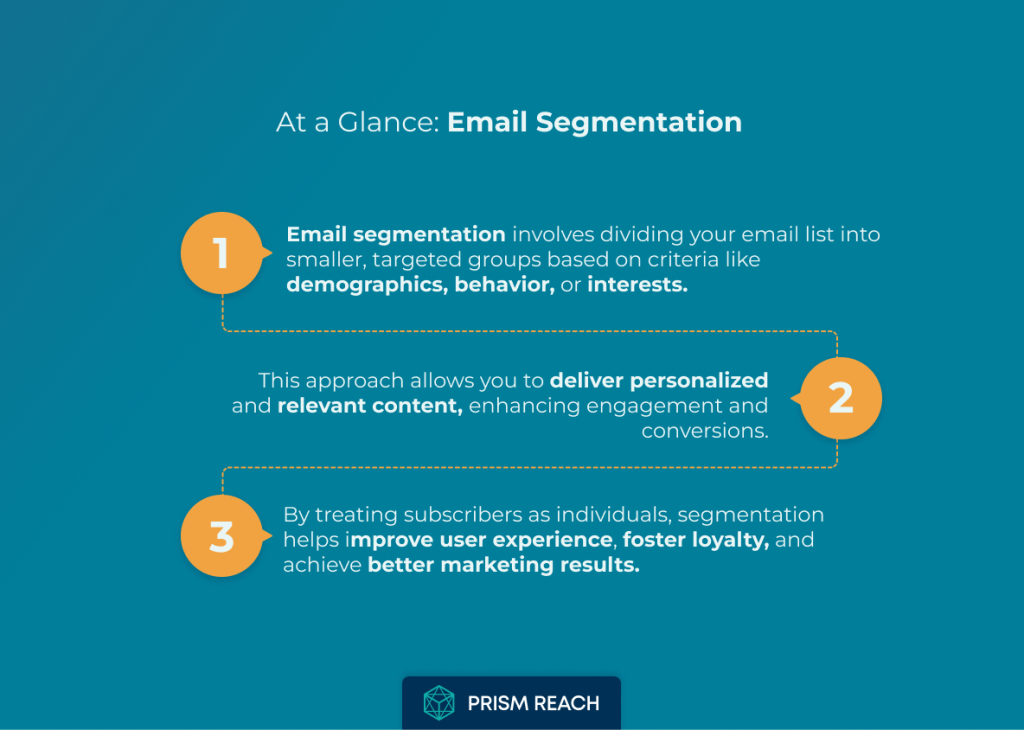
The Importance of Email Segmentation
You might be wondering, does email segmentation even matter? The answer is a resounding yes! Studies have consistently shown that segmented email campaigns outperform non-segmented campaigns across various key metrics. According to a study by MailChimp, segmented campaigns have a 14.31% higher open rate and a 100.95% higher click-through rate compared to non-segmented campaigns. Furthermore, the DMA found that segmented and targeted emails generate 58% of all revenue, highlighting the significant impact of segmentation on the bottom line.
By treating your subscribers as individuals with unique needs, preferences, and behaviors, you demonstrate that you value their engagement and are committed to providing them with the most relevant and personalized content. This approach not only improves the overall user experience but also fosters a stronger sense of connection and loyalty between your brand and your subscribers.
Moreover, email segmentation allows you to deliver the right message to the right person at the right time. By tailoring your content and offers based on specific subscriber characteristics, such as demographics, interests, or past interactions with your brand, you can increase the likelihood of conversion and drive more meaningful engagement. This targeted approach also helps you avoid the pitfalls of generic, one-size-fits-all messaging that can lead to lower engagement rates and higher unsubscribe rates.
In today’s competitive digital landscape, where consumers are bombarded with countless marketing messages daily, email segmentation has become a critical strategy for cutting through the noise and delivering value to your subscribers. By embracing segmentation, you can differentiate your brand, build stronger relationships with your audience, and ultimately achieve better email marketing results.
Upgrade Your Email Marketing with AI Personalization!
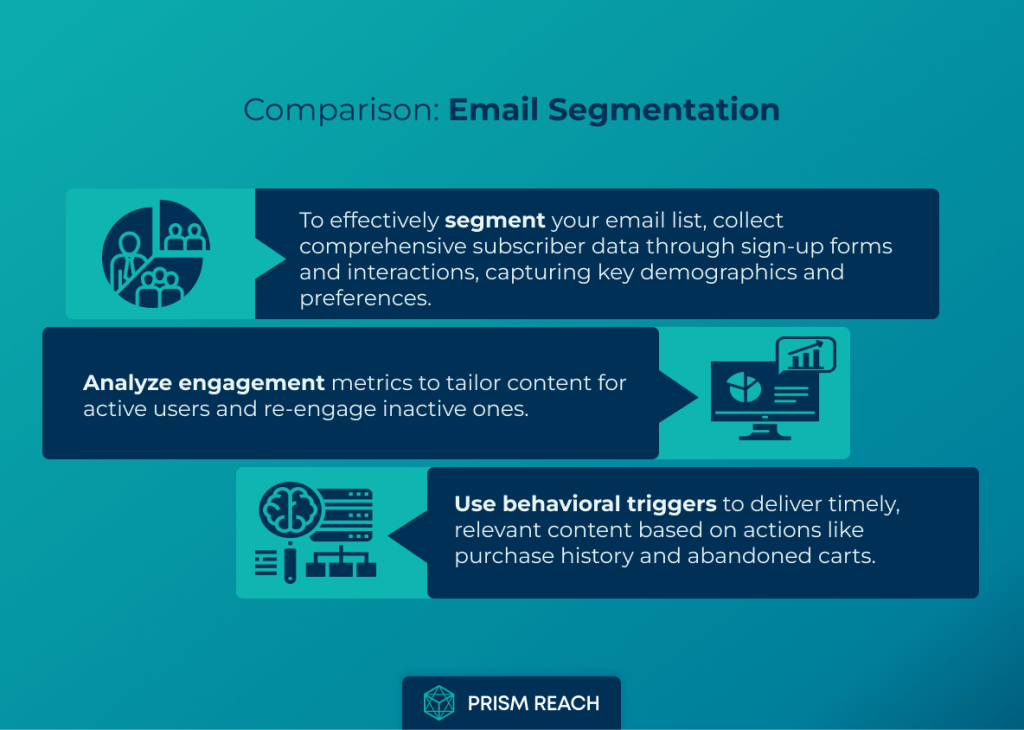
10 Elements to Consider for Maximum Impact in Your Email Segmentation
Building and maintaining effective email segmentation requires a comprehensive approach. Here are ten critical elements to consider for maximizing the impact of your email segmentation:
- Behavioral Triggers for Segmentation:
Segment your audience based on specific actions they take on your website or within your emails (e.g., product views, cart abandonment).- Effectiveness: Highly effective as it targets users when they show intent, leading to higher conversion rates.
- Obscurity: Many marketers focus on demographic data but overlook behavioral triggers.
- Ease of Implementation: Requires tracking tools but is straightforward with most email platforms.
- Uniqueness: Emphasizes real-time engagement rather than static data.
- Advanced Lifecycle Segmentation:
Go beyond basic lifecycle stages (new, active, lapsed) by creating sub-segments that reflect specific behaviors or engagement levels within those stages.- Effectiveness: Increases relevance of communications, improving engagement rates.
- Obscurity: Many marketers use broad lifecycle segments without deeper analysis.
- Ease of Implementation: Requires initial setup and ongoing analysis but can be automated.
- Uniqueness: Allows for more nuanced targeting within established segments.
- Use of Predictive Analytics:
Implement predictive analytics to forecast future behaviors based on past actions, allowing for proactive segmentation.- Effectiveness: Can significantly enhance targeting accuracy and engagement.
- Obscurity: While predictive analytics is known, its application in email segmentation is underutilized.
- Ease of Implementation: Requires advanced tools and data analysis capabilities.
- Uniqueness: Leverages data science techniques for marketing advantage.
- Segment by Engagement Frequency:
Create segments based on how frequently subscribers engage with your emails (e.g., frequent openers vs. occasional readers).- Effectiveness: Tailors communication frequency and content to match user preferences, reducing unsubscribes.
- Obscurity: Many marketers send the same frequency regardless of engagement levels.
- Ease of Implementation: Easy to track with most email marketing platforms.
- Uniqueness: Optimizes the user experience based on engagement patterns.
- Utilize Customer Journey Mapping:
Map out the customer journey and create segments based on where subscribers are in that journey (e.g., awareness, consideration, decision).- Effectiveness: Ensures that messaging aligns with the subscriber’s current needs and interests.
- Obscurity: Many marketers don’t take the time to visualize the customer journey for segmentation.
- Ease of Implementation: Requires thoughtful planning but can be very effective once established.
- Uniqueness: Integrates marketing strategy with user experience design.
- Incorporate User Feedback into Segmentation:
Regularly solicit feedback from your subscribers about their preferences and interests to refine your segments.- Effectiveness: Directly aligns your content and offers with what subscribers want, improving satisfaction and engagement.
- Obscurity: Few marketers actively seek feedback for segmentation purposes.
- Ease of Implementation: Can be implemented through surveys or polls; requires some effort but is manageable.
- Uniqueness: Creates a two-way communication channel with subscribers.
- Leverage Social Media Interactions:
Use data from social media interactions (likes, shares, comments) to inform email segmentation strategies.- Effectiveness: Engages users based on their broader interests and behaviors outside of email.
- Obscurity: Many marketers do not integrate social media data into their email strategies.
- Ease of Implementation: Requires integration between social media platforms and email marketing tools but is increasingly supported by many platforms.
- Uniqueness: Combines insights from multiple channels for a holistic view of subscriber behavior.
- Seasonal Behavior Segmentation:
Segment your audience based on seasonal behaviors or preferences (e.g., holiday shoppers vs. regular customers).- Effectiveness: Tailors campaigns to align with specific times of the year, enhancing relevance and urgency.
- Obscurity: While seasonal campaigns are common, detailed behavioral segmentation around seasons is less so.
- Ease of Implementation: Requires historical data analysis but can be automated in future campaigns.
- Uniqueness: Focuses on timing and context rather than just demographics or past purchases.
- Use of Micro-Segmentation:
Implement micro-segmentation to create very small, highly specific segments based on niche interests or behaviors.- Effectiveness: Allows for extremely personalized messaging that can significantly increase engagement rates.
- Obscurity: Many marketers stick to broader segments due to perceived complexity in micro-segmentation.
- Ease of Implementation: More complex than traditional segmentation but feasible with the right tools.
- Uniqueness: Takes personalization to an advanced level not commonly practiced.
- Time-Based Segmentation:
Segment your audience based on the time they typically engage with your emails (e.g., morning vs. evening readers).- Effectiveness: Increases open rates by sending emails at times when recipients are most likely to engage.
- Obscurity: While timing is considered, specific time-based segmentation is often overlooked in favor of general best practices.
- Ease of Implementation: Relatively easy with tracking tools that analyze open times across segments.
- Uniqueness: Optimizes send times for individual subscriber habits rather than general trends.
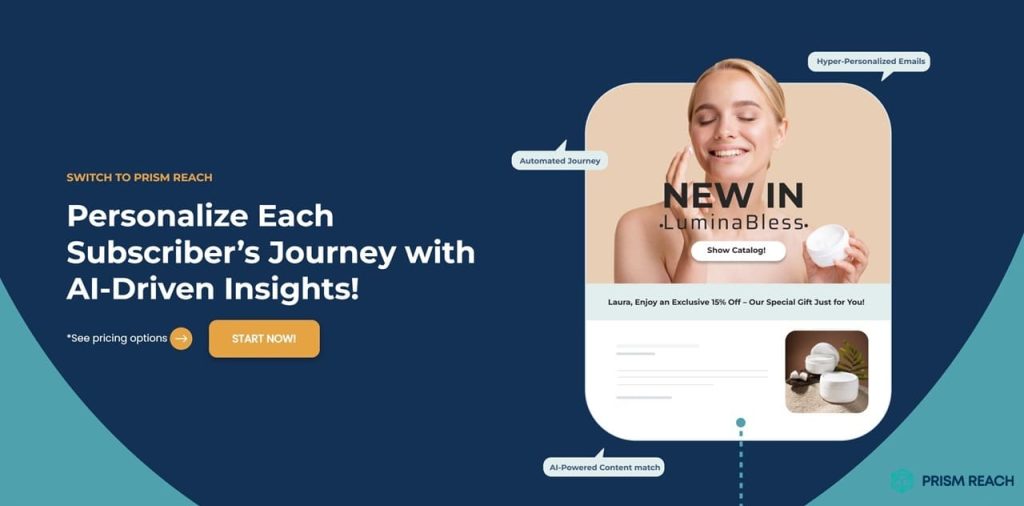
Advanced Sender Reputation Strategies: Hidden Gems
While the foundational elements of sender reputation are essential, integrating advanced strategies can significantly enhance its effectiveness. Here are five “hidden gems” strategies that are not widely recognized but can transform your sender reputation management:
- Gradual Domain Warming:
- Strategy: Instead of sending a large volume of emails from a new domain, gradually increase the sending volume over several weeks. This approach helps build trust with ISPs and establishes a positive sender reputation without triggering spam filters.
- Effectiveness: Gradual domain warming allows ISPs to observe consistent sending patterns, which is critical for building trust and ensuring high deliverability rates.
- Obscurity: Many marketers overlook this step, believing they can start with high volumes immediately. This oversight can lead to poor deliverability and damage to the sender reputation.
- Ease of Implementation: Requires careful planning and monitoring but is straightforward to execute using most email marketing platforms.
- Uniqueness: While domain warming is a known practice, the methodical, gradual approach is often underutilized, making it a unique and highly effective strategy.
- Utilize Engagement Metrics for Segmentation:
- Strategy: Segment your email list based on engagement metrics such as opens, clicks, and replies, rather than relying solely on demographics. This allows for more targeted and effective email campaigns.
- Effectiveness: Targeting engaged users can improve overall engagement rates and positively impact sender reputation by ensuring that your emails are reaching a receptive audience.
- Obscurity: Many marketers still rely heavily on demographic segmentation alone, missing out on the benefits of behavior-based segmentation.
- Ease of Implementation: Requires initial setup but can be automated with most advanced email marketing tools, including Prism Reach.
- Uniqueness: Engagement-based segmentation is less common than traditional methods, providing a competitive edge in targeting and personalization.
- Implement a Feedback Loop System:
- Strategy: Sign up for feedback loops with major ISPs to receive notifications when recipients mark your emails as spam. This proactive approach allows you to address issues promptly and maintain a good sender reputation.
- Effectiveness: Receiving real-time feedback on spam complaints enables immediate action to remove dissatisfied subscribers, thereby reducing complaint rates and protecting your reputation.
- Obscurity: Many marketers are unaware of how to set up or utilize feedback loops effectively, leading to missed opportunities for reputation management.
- Ease of Implementation: Requires some technical setup but is manageable for most email marketers with the right tools and knowledge.
- Uniqueness: Feedback loops are underused despite their potential for proactive reputation management, making them a hidden gem for savvy marketers.
- Optimize Send Times Based on Engagement:
- Strategy: Analyze historical data to determine the best times to send emails based on when your audience is most engaged. Utilize this information to schedule your campaigns for maximum impact.
- Effectiveness: Sending emails at times when your audience is most active can significantly increase open rates and engagement, thereby enhancing your sender reputation.
- Obscurity: While send time optimization exists, few marketers leverage it based on specific engagement data tailored to their unique audience.
- Ease of Implementation: Requires data analysis but can be automated with advanced email marketing tools like Prism Reach, which offer predictive analytics for optimal send times.
- Uniqueness: This strategy tailors send times specifically to your audience’s behavior rather than relying on generic best practices, offering a personalized approach to email scheduling.
- Use Personalized Subject Lines Strategically:
- Strategy: Personalize your subject lines using dynamic fields like the recipient’s name or location. However, use personalization sparingly to avoid appearing spammy and to maintain authenticity.
- Effectiveness: Personalized subject lines can significantly boost open rates and engagement, positively impacting your sender reputation by demonstrating relevance and personalization.
- Obscurity: Many marketers use personalization but may not fully realize its specific impact on sender reputation or use it strategically.
- Ease of Implementation: Most email platforms support dynamic fields, making this easy to implement with minimal effort.
- Uniqueness: While personalization in subject lines is common, the strategic sparing use is less frequently discussed, providing a nuanced approach to enhancing open rates without overdoing it.
- Regularly Conduct Deliverability Audits:
- Strategy: Perform regular audits of your email deliverability metrics, including bounce rates, open rates, and spam complaints. Use these audits to identify and address issues before they escalate.
- Effectiveness: Identifying issues early allows for timely adjustments that can protect and improve sender reputation, ensuring consistent deliverability.
- Obscurity: Many marketers neglect systematic audits in favor of ad-hoc checks or rely solely on overall performance metrics, missing out on granular insights.
- Ease of Implementation: Requires some time investment but can be integrated into regular marketing workflows using tools like Prism Reach for automated reporting.
- Uniqueness: While audits are known, their frequency and depth are often insufficient in many organizations, making thorough, regular audits a distinctive and highly effective practice.
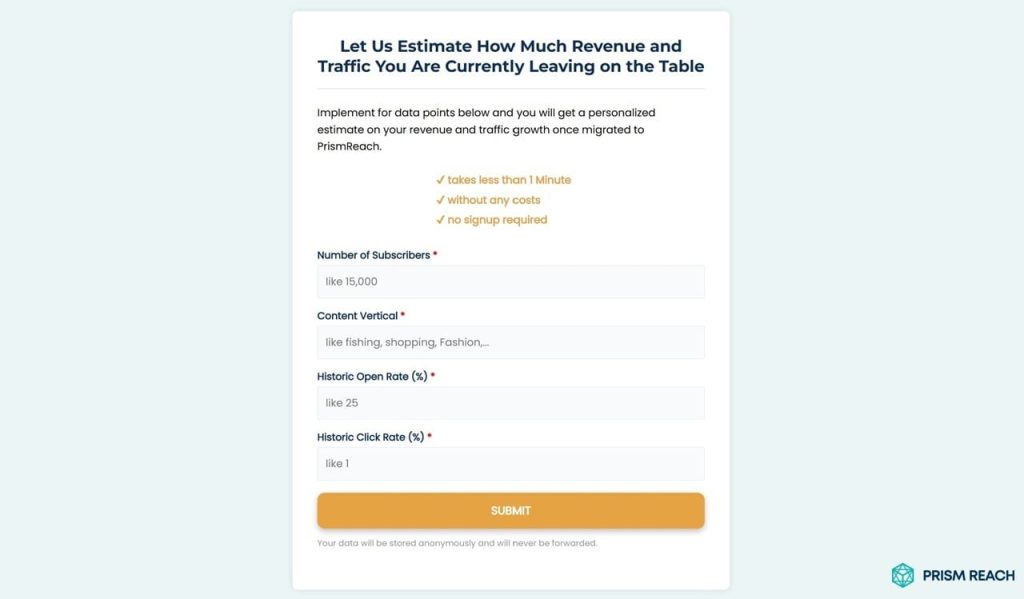
Advanced Email Segmentation Strategies: Hidden Gems
While the foundational elements of email segmentation are essential, integrating advanced strategies can significantly enhance its effectiveness. Here are five “hidden gems” strategies that are not widely recognized but can transform your email segmentation efforts:
- Leverage Predictive Analytics:
Strategy: Implement predictive analytics to forecast future subscriber behaviors based on past actions. This allows you to proactively segment your audience and tailor your campaigns accordingly.- Effectiveness: Enhances targeting accuracy and engagement by anticipating subscriber needs and behaviors.
- Obscurity: While predictive analytics is known, its application in email segmentation is underutilized.
- Ease of Implementation: Requires advanced tools and data analysis capabilities, but tools like Prism Reach simplify the process.
- Uniqueness: Uses data science techniques to gain a marketing advantage, setting your campaigns apart.
- Micro-Segmentation:
Strategy: Implement micro-segmentation to create very small, highly specific segments based on niche interests or behaviors.- Effectiveness: Allows for extremely personalized messaging that can significantly increase engagement rates.
- Obscurity: Many marketers stick to broader segments due to perceived complexity in micro-segmentation.
- Ease of Implementation: More complex than traditional segmentation but feasible with the right tools like Prism Reach.
- Uniqueness: Takes personalization to an advanced level not commonly practiced, providing a competitive edge.
- Incorporate User Feedback into Segmentation:
Strategy: Regularly solicit feedback from your subscribers about their preferences and interests to refine your segments.- Effectiveness: Directly aligns your content and offers with what subscribers want, improving satisfaction and engagement.
- Obscurity: Few marketers actively seek feedback for segmentation purposes.
- Ease of Implementation: Can be implemented through surveys or polls; requires some effort but is manageable.
- Uniqueness: Creates a two-way communication channel with subscribers, fostering trust and loyalty.
- Leverage Social Media Interactions:
Strategy: Use data from social media interactions (likes, shares, comments) to inform your email segmentation strategies.- Effectiveness: Engages users based on their broader interests and behaviors outside of email.
- Obscurity: Many marketers do not integrate social media data into their email strategies.
- Ease of Implementation: Requires integration between social media platforms and email marketing tools, which is increasingly supported by many platforms.
- Uniqueness: Combines insights from multiple channels for a holistic view of subscriber behavior.
- Time-Based Segmentation:
Strategy: Segment your audience based on the time they typically engage with your emails (e.g., morning vs. evening readers).- Effectiveness: Increases open rates by sending emails at times when recipients are most likely to engage.
- Obscurity: While timing is considered, specific time-based segmentation is often overlooked in favor of general best practices.
- Ease of Implementation: Relatively easy with tracking tools that analyze open times across segments.
- Uniqueness: Optimizes send times for individual subscriber habits rather than general trends, providing a personalized approach.
- Utilize Customer Journey Mapping:
Strategy: Map out the customer journey and create segments based on where subscribers are in that journey (e.g., awareness, consideration, decision).- Effectiveness: Ensures that messaging aligns with the subscriber’s current needs and interests.
- Obscurity: Many marketers don’t take the time to visualize the customer journey for segmentation.
- Ease of Implementation: Requires thoughtful planning but can be very effective once established.
- Uniqueness: Integrates marketing strategy with user experience design, providing a cohesive approach to segmentation.
Jumpstart Your Email Strategy with Prism Reach
Maintaining and enhancing your email segmentation requires diligent effort and the right tools. This is where Prism Reach comes into play. Prism Reach is an innovative AI-powered SaaS solution designed to enhance the effectiveness of email marketing campaigns through deep personalization and automation. By leveraging Prism Reach, you can streamline your email marketing processes, ensure high deliverability rates, and maintain a stellar sender reputation.
Key Benefits of Prism Reach
- AI-Powered Personalization: Prism Reach utilizes sophisticated AI algorithms to create detailed user avatars based on subscriber behavior and preferences. This enables the creation of highly personalized email content that resonates with each individual recipient.
- Dynamic Content Selection: The platform’s ability to dynamically select and tailor content based on real-time data ensures that your emails are always relevant and engaging to your audience.
- Performance Monitoring: Prism Reach provides robust tracking tools to monitor the effectiveness of your email campaigns, including open rates, click-through rates, and engagement metrics. This data-driven approach allows for continuous optimization and improvement of your email strategies.
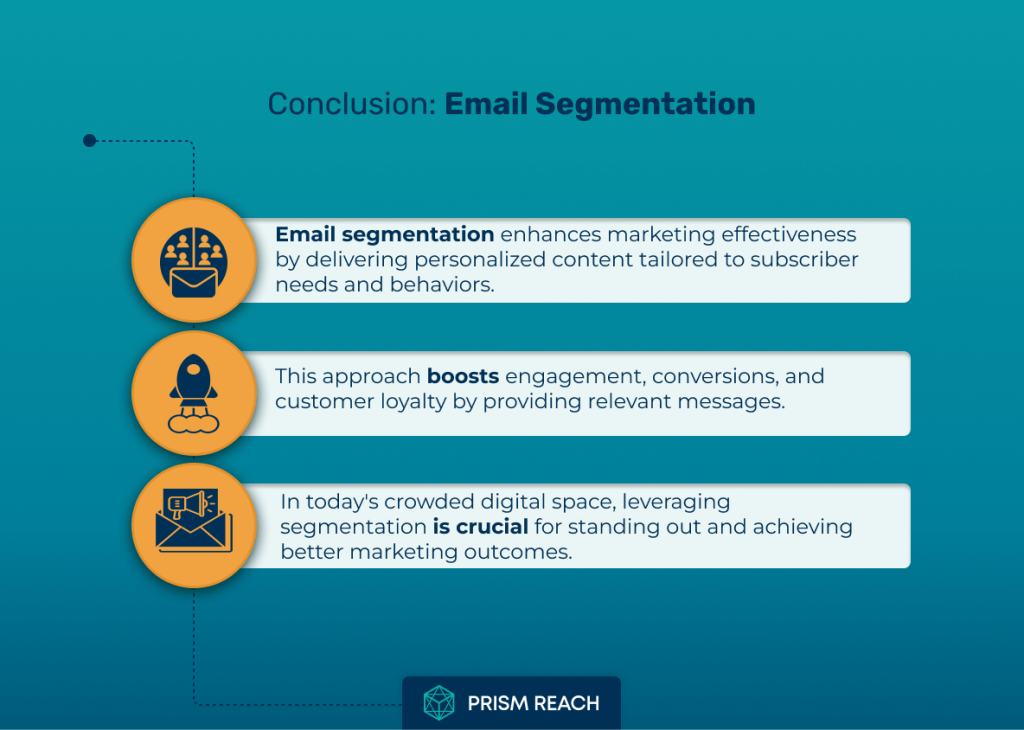
Prism Reach’s Features Enhancing Email Segmentation
- Content Clustering: Groups website content and social media posts into relevant categories, enabling targeted messaging in your emails.
- User Avatars: Creates personalized profiles for each subscriber, ensuring that email content can be tailored to individual preferences and behaviors.
- AI-Generated CTAs: Automatically generates and updates CTAs in your emails based on subscriber interactions and seasonal trends, enhancing engagement and deliverability.
How Prism Reach Enhances Your Email Marketing
By leveraging Prism Reach, businesses can transform their email marketing efforts from basic communication tools into dynamic, personalized experiences that drive engagement and maintain a strong sender reputation. Here’s how Prism Reach can elevate your email marketing strategy:
- Personalized Content: Prism Reach analyzes subscriber data to deliver personalized content that aligns with individual preferences, increasing engagement and reducing spam complaints.
- Automated Campaigns: Automate your email campaigns with intelligent scheduling and content curation, ensuring timely and relevant communication with your audience.
- Real-Time Monitoring: Keep a close eye on your sender reputation with real-time monitoring tools that alert you to any potential issues, allowing you to take proactive measures.
Upgrade Your Email Marketing with AI Personalization!
Conclusion
Email segmentation is a game-changer for businesses looking to maximize the impact of their email marketing campaigns. By delivering targeted, relevant, and personalized content to specific subscriber groups, you can foster stronger connections, improve engagement, and drive better business results. Remember to start with basic segmentation, collect relevant data, analyze engagement levels, and continuously test and refine your segments. With the right strategies and tools, such as Prism Reach, you can unlock the full potential of email segmentation and take your email marketing to new heights.
Embracing advanced segmentation strategies like behavioral triggers, predictive analytics, and micro-segmentation can set your campaigns apart in a crowded inbox. Additionally, integrating user feedback and social media interactions into your segmentation efforts can provide deeper insights into your audience’s needs and preferences, allowing for more effective and personalized communication.
With dedication, the right strategies, and powerful tools like Prism Reach, your email marketing campaigns can achieve unprecedented success, fostering lasting relationships with your subscribers and driving tangible business results.
Sources
- Influno: Email Segmentation Strategies
- Hurrdat Marketing: How to Segment Your Email List
- EmailMonday: The Art of Email Marketing Segmentation
- Mailchimp: Email Marketing Resources
- HubSpot: Email Marketing Segmentation